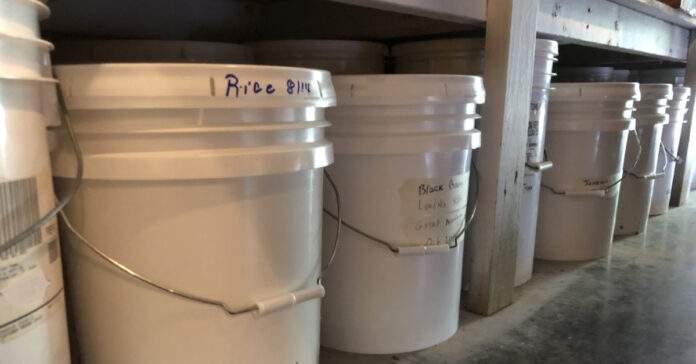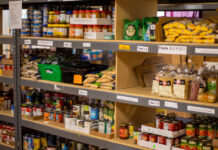
Last year, I made predictions for 2024. If you go back and read them, the vast majority came true. As a result, I am going to quit while I am ahead, and not make predictions for 2025. Instead, I am going to talk about my prepping objectives and goals for 2025, and why they have changed in the past year.
Despite the accuracy of my predictions, it was the items I did not predict that had the largest impact on my personal life. Chief among those are the death of an elderly relative and being in the target zone for Hurricane Helene.
The death of my elderly relative had an impact because I inherited some money, which I turned around and invested in a new solar power system and some other home improvements. This system has had and will continue to have a positive impact on our long-term survivability in a grid-down scenario. Not long after we installed, we lived this scenario following Hurricane Helene, which left us without grid power for 21 days. The solar power system has also has reduced the inconvenience of our frequent power outages (we have experienced 25 since July) and has cut our power bill to less than $5 most months.
Lessons Learned7
Living through Helene and its aftermath taught us several lessons which will change our prepping in 2025. We saw firsthand how valuable solar power can be in a grid-down scenario because it let us continue to use our freezer and refrigerator. We had enough food in our freezer to food us for more than two months. Food preservation and food preparation, which are so much easier with a reliable power source, will make a big difference during a SHTF scenario.
This has changed my perspective on the value of having a solar generator capable of storing 3 to 5 kWh of power. Of course, a bigger solar power system is better, but cost is an issue as larger systems are more expensive. In 2025 and beyond, I will invest in appliances that minimize electrical use and reduce power consumption, making our house more efficient and better able to run on solar power.
Most importantly, living through a mass-crisis in which we were cut off from society for nine days drove home how much we will have to count on neighbors and friends in a true end-of-the-world scenario. Steven Harris has said, “It is easier to feed your neighbors than kill them,” and I find myself forced to agree, although there has to be some limit. I think I would rephrase that as, “Many of your neighbors may be more valuable than the food they consume.”
I recognizing how bad a disaster Helene would have been if there had been no outside aid, and that is my new motivating factor for becoming even better prepared and provisioned.
Large-Scale Disasters
If this country, continent, hemisphere, or planet experiences a massive, disabling catastrophe in which there are no outside resources that can evacuate people, provide medical treatment, bring food and water, and help people restore services and utilities, many will die and we are well and truly screwed. By “we,” I mean all of us affected by the disaster, likely including our community, county, state, and/or country.
The good news is that potential large-scale disaster that affects at least the entire country or continent is probably limited to five top contenders:
- A nuclear war with strikes in 20 or more locations on U.S. soil.
- A large space-based EMP attack affects power generation and distribution plus electronic devices throughout the country.
- Being struck by a large asteroid or comet, similar to the 8-mile wide rock that hit the Yucatan Peninsula 66 million years ago. This asteroid strike is estimated to have killed three-quarters of Earth’s plant and animal life, including wiping out the dinosaurs.
- A large, caldera-forming eruption of a super volcano that disgorges a huge amount of ash, smoke and other residue which causes a massive drop in temperatures over a multi-year period.
- A deadly virus that has a high transmission rate, a high mortality rate, and a long incubation period that kills billions of people.
Things like an economic collapse, hyperinflation, civil war, and even world war are unlikely to cause this level of a disaster, unless, of course, the war results in using nuclear weapons or EMP. That means many of my prepping concerns will be regional or economic disasters from which we can recover. As we are seeing in the aftermath of Helene, recovery and rebuilding require a multi-year effort, for which you must be prepared, but it is better than the alternative.
Feeding the Neighborhood
The whole idea of feeding the neighborhood is driving me to consider stocking more grain and other basic food stuffs. I had already considered 2025 to be a year in which I rotated my grains, but I think I am going to follow my buddy Karl’s recommendation and not feed my old grains to the chickens but to store them somewhere else, possibly in a rented storage unit. This will require some further thinking because the closest storage unit is 20 minutes away, and it has no climate controlled units. That 20 minute drive becomes an all-day walk after a disaster, and how are we going to haul back thousands of pounds of food if we have no vehicle? Better to have the extra food on hand, even if that means bringing in a container or a shed in which to store it.
The easiest way to ensure we can “feed the neighborhood” is to store food. Lots of food. The cheapest way to do that is to store grains and beans.

My primary choices for grains have been wheat and rice, with oatmeal as a secondary. I also stock pasta and less than 20 pounds of barley, quinoa, and grits. I expect in 2025 I will add more of the above, plus corn.
My top choices for beans are pinto and black beans—mostly because they are easily available in bulk. There are many other dried beans available and legumes like split peas and lentils that are also useful for long-term storage food.
Some folks may initially turn down a plate of rice and beans, but after a few weeks or months, their mood will change as their shelves grow bare.
More Preps for 2025
A smaller lesson from Helene is that UTVs or side-by-sides (SxS) are useful in our area, especially when roads and bridges are damaged and destroyed. They can also be helpful in helping harvest firewood across our almost 20-acre lot and for traveling through the woods quickly. (There are old logging roads around here that UTVs can traverse, at least once the fallen trees are removed.) Despite my original decision not to buy one—I figured I could buy firewood for at least a decade for the cost of a new one—I am thinking about buying a used SxS with a dump bed. No idea if I will do so in 2025, but it is moving up the wish list.
As an outgrowth of the landslide we experienced, I am planning to build a larger, more robust wood pile, reinforced with T-posts driven a foot into the ground, which will be a barrier in a future landslide. Our existing woodpile did a marvelous job stopping the dirt and trees that slide down the mountain, but a good ten feet of the pile topped over and was overrun with mud. (It still stopped the boulder, however, and protected the house.) My hope is this will increase the likelihood of stopping a future landslide before it reaches the house.
Bees and Chickens
I am thinking about keeping my bee yard at six to eight hives rather than expanding as I have so far each year. In 2024, we harvested 270 pounds of honey, and that is more than enough. I don’t need more. Six or eight hives are easy to work in one morning or afternoon every week or two during the season. It also means I can stop buying more equipment, which is the expensive part of beekeeping. Instead, I can just focus on what I have and sell any excess bees. Should the SHTF, or if I experience an increased demand for honey, I can add a few hives relatively quickly. Until then, I’ll be satisfied with producing 372,600 calories of honey in a year.
My big question is when to buy new chickens. We are averaging 12 or 13 eggs a day, which is excellent output for 19 hens in the middle of the darkest days of the winter. I had been planning to buy new chicks in August, but if these hens pick back up and start producing 17 or more eggs per day, I may keep them through, or at least into, the winter of 2025.
I also have to determine how many chickens I want and what breeds. Ten dozen eggs per week is an awful lot. If I stick with aggressive layers like the Red Star breed, I may come down to 14 hens and one rooster, which should cut us back to seven dozen eggs during peak laying time.
A good Time for Planning
Life changes, your situation changes, your finances might change, and the world changes around us. It’s a good idea to stop occasionally and look where you are and how far you have come. The new year is a good time to reevaluate your prepping journey and determine if you want to stay the course, shift direction, speed up, or slow down.






